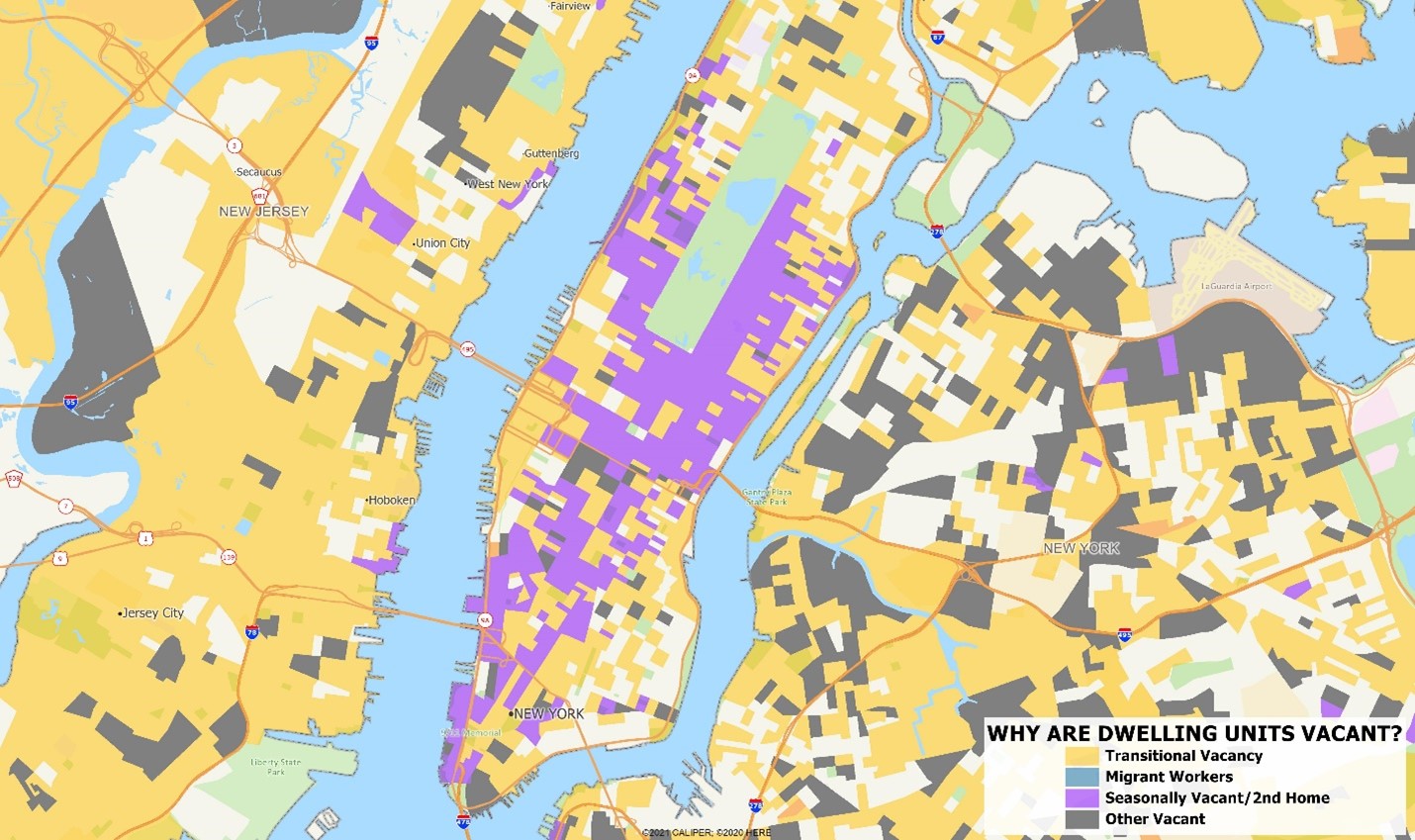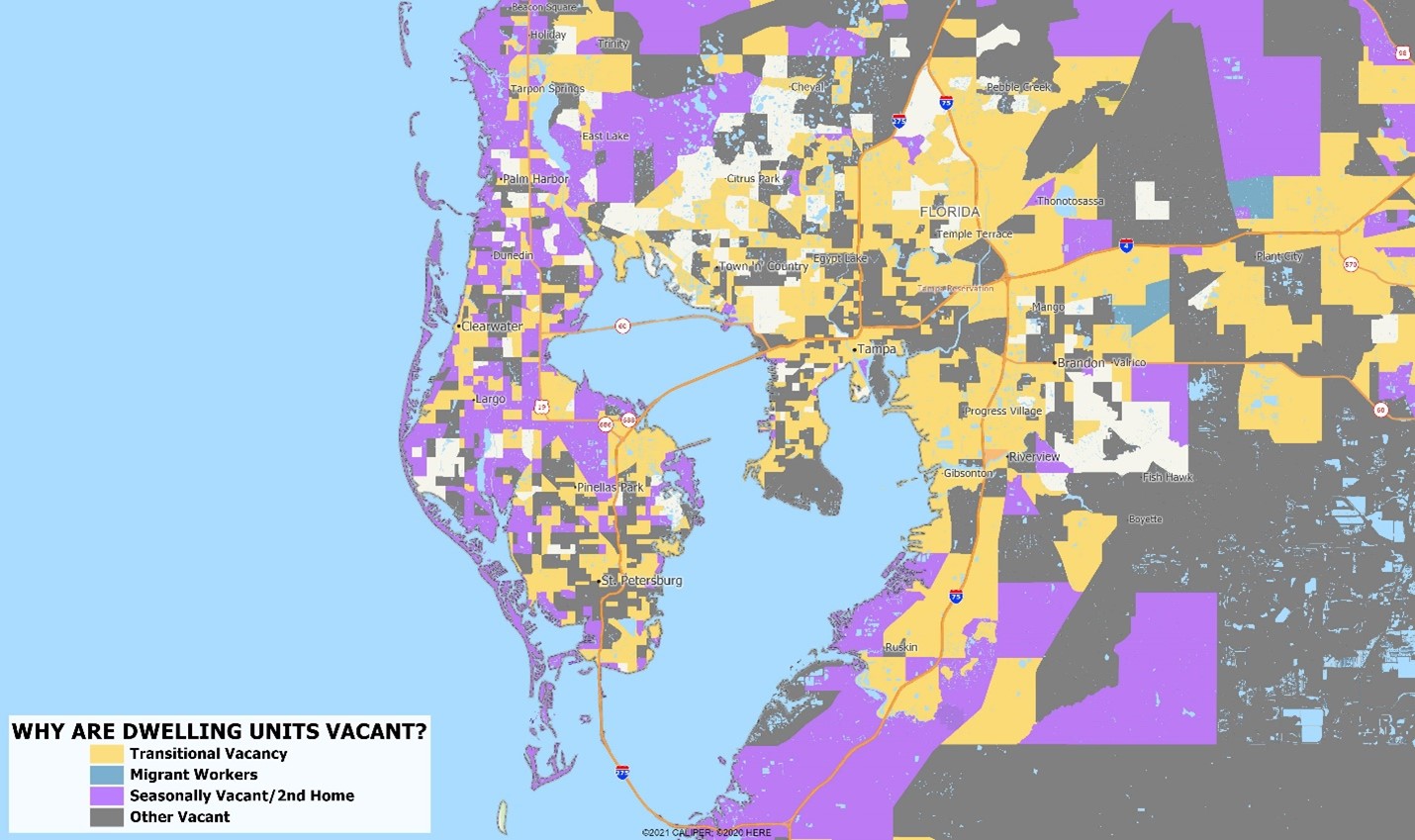We recently ran across a post that looked at housing vacancies in Manhattan that was interesting but got us thinking. Most standard demographic reports include a reference to the number of housing units which are estimated to be currently vacant, and this can be an important characteristic to review in location decisions.
Often, many users of demographics tend to stick to the “top line” variables – total population plus key indicators of life stage and affluence are almost always reviewed carefully. The person looking at the seven-page demographics report may not ever venture past the key variables on which decisions are made – whether by a model, a set of threshold values, or simple intuition.
With vacant dwellings, areas with a high percentage of unoccupied housing may raise alarm signals – is this neighborhood in distress? It may be, but it is important to look into the details – why are housing units vacant? There are three main reasons –
- The dwellings are in transition from one occupying household to the next. These are often classified as “vacant, for rent”, “vacant, rented but not yet occupied”, “vacant, for sale”, and “vacant, sold but not yet occupied”. Churn in neighborhoods is normal, but can be a warning sign if it is high relative to nearby areas.
- Seasonally vacant or vacation use, which is increasingly common. A recent estimate put this figure at just shy of 6% of households own two or more homes. Over half of the vacant dwellings nationwide are seasonally occupied or used as a second home. Some areas of the country – beach and mountain resort towns particularly – have very high levels of seasonal housing.
- Vacant and abandoned housing accounts for about 25% of the total vacancies, and when levels are high, likely indicates economic distress in an area
Back to the map that triggered our interest. A map showing the percentage of vacancies centered on Manhattan shows a wide range peaking in the area to the south of Central Park:

What is particularly interesting is when we classify areas by what type of vacancy is dominant –

Now we can clearly see that the vacancies in much of Manhattan area seasonal in nature – in contrast to adjacent areas which are a mixture of transitional vacancies and more permanent abandonment. So, we looked at two other areas – Detroit and Tampa – which have radically different reasons for vacant housing –

Looking only at “vacant dwellings” can be misleading. Most of the time, the additional effort of wading through that seven or eight page report won’t be rewarded with an insight that changes the decision making process. When it does, however, you will be glad first that those details are there, and second, that you took the time to look at them carefully. We appreciate these details and, with our vast variable library, have the ability to give them to you. We have the data that you need to see the complete picture. Wondering what offbeat demographics might be worth reviewing? We’re happy to point you to them!


Recent Comments